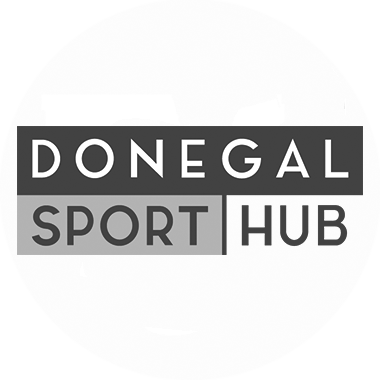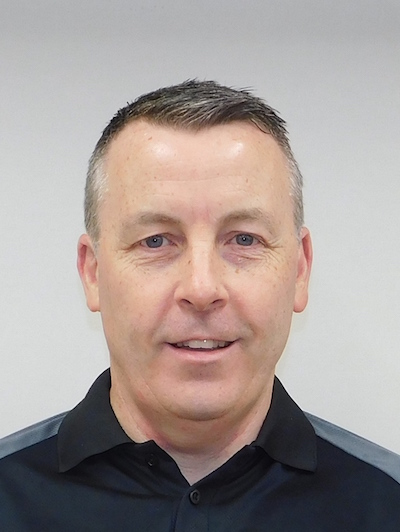In this week’s First Aid column we will discuss another potentially life-threatening condition, a stroke. Strokes can occur in any age group. 25% of strokes occur in the 15-59 years of age category but are more commonly present in the over 60’s.
What is a stroke?
Similar to a heart attack, which is a clot inside the heart muscle, a stroke is caused by an interruption to the normal blood flow within the brain. Where there is an interruption, cells within the brain become starved of oxygen-rich blood and will eventually die leading to damage to the brain itself which can have catastrophic results for the casualty.
There are two main reasons for this interruption to normal blood flow:
1. An Ischaemic stroke. These strokes account for 80% of strokes nationally and occur as a result of a blood vessel within the brain becoming blocked. A clot can travel from another organ, such as the heart, and lodge inside the brain causing a blockage of blood flow, or the blood vessels themselves may have become narrower as a result of plaque build-up.
2. A Haemorrhagic stroke. A haemorrhagic stroke occurs when a weakened or damaged blood vessel ruptures within the brain. When the blood vessel bursts the blood escapes from the vessel into the surrounding tissue leading to oxygen starvation for the intended cells.
Who is at risk from stroke?
The good news is that 90% of strokes are preventable, however, there are at-risk groups who must be aware of the potential of a stroke occurring. These include
• Older people. As we age our blood vessels become harder, making them more likely to become blocked by a clot.
• High blood pressure. High blood pressure is the leading cause of stroke so knowing your blood pressure numbers and actively managing your blood pressure medication, if prescribed, will help you reduce your risks. Consult with your GP or local nurse for advice on the correct numbers for your age group.
• Smokers. Smoking damages the lining of your blood vessels and weakens them leading to haemorrhagic strokes.
• Being overweight. Extra weight increases your risk of elevated blood pressure and Type 2 diabetes which are both linked to stroke.
• Atrial Fibrillation. If you have an irregular or abnormally fast heartbeat then sometimes the heart does not empty itself with every beat. This can lead to clots forming and traveling from the heart. Seek medical advice if you feel this may be something that concerns you.
• High Cholesterol. Having a diet high in bad fats increases the risk of plaque forming inside the blood vessels which can cause a blockage to occur.
• Hereditary groups. Some families are prone to a higher risk of stroke, so if you have a family history please discuss this with your GP.
Signs and symptoms of a strokeA stroke is an illness that occurs suddenly and often without warning, therefore the sooner we can recognise the potential for a stroke and call for help, the less damage may occur. Casualties will often have some of the following signs and symptoms.
* A sudden intense headache, which can also be accompanied by dizziness or nausea.
* Numbness, weakness, or paralysis which often affects the arms, the face, or the legs on one or both sides of the body.
* Blurred or loss of vision in one or both eyes.
* Speech impediments such as slurring or having difficulty forming words to communicate.
* Balance and coordination problems.
Can we do a quick test if we suspect a stroke?
If we suspect a stroke is occurring or has occurred we can conduct the BEFAST test.
B for Balance: Has the casualty’s balance and coordination been affected?
E for Eyes: Are both pupils equal and round. Is one eye drooped or is there a loss of vision or blurred vision?
F for Face: Is there symmetry. Is one corner of the mouth drooping or is there a sign of facial paralysis? Ask the casualty to smile for you. Is it a grimace or do they struggle to form a smile?
A for Arms: Ask the casualty to hold their arms out for ten seconds. Is there muscle weakness or do they struggle to maintain the position?
S for Speech: Is their speech easy to understand or is it confused or inaudible?
T for Time: If we are concerned by any of the above findings it’s time to call for help immediately. The sooner we get the casualty into hospital the better their chances are of survival are and we reduced the potential damage.
Treatment
As soon as we suspect a stroke may have occurred we call for help immediately. Time is of the essence here.
While we wait for help to arrive we can keep the casualty calm and reassured them that help is on its way. Keep the casualty warm and in a sitting position if possible to reduce the flow of blood to the head. If you can, monitor the casualty’s vital signs, record their pulse rate, breathing rate, skin colour and temperature, and their level of consciousness. Be prepared for the casualty to lose consciousness and if this does happen follow the emergency services operators advice. We must also be prepared to begin CPR if necessary.
TIAs or Transient Ischemic Attacks.
TIA’s are often referred to as “Mini Strokes” and are caused by a small clot that causes a brief interruption in the blood supply to the brain. TIA’s have all the signs and symptoms of a full-blown stroke so they need to be taken seriously and we should always call for help if we are concerned at any point. TIA effects normally subside within 24hrs but a TIA is often a precursor to a larger event.
Bell’s Palsy.
There is another condition that looks like a stroke but is not related because it is a muscular condition as opposed to a vascular one. Bell’s Palsy causes a sudden weakness or paralysis in the facial muscles that can last for several weeks or months. It is believed to be caused by a viral infection or swelling of a facial nerve and can affect a casualty at any age. Because the signs and symptoms of Bell’s Palsy are so like that of a stroke, we treat it as if it is a stroke first by calling for immediate help. Once the casualty is in hospital a neurologist will confirm if it is Bell’s Palsy and not a stroke.
In next weeks article, we will discuss the signs and symptoms of another potential killer, Meningitis and Septicaemia. These illnesses tend to increase at this time of year and I will explain why next week.
Donegal safety Training Solutions offer the following training courses and can tailor any course to suit your specific needs. Please contact Aiden on 0863111661 or email info@dsts.ie for details.
* All levels of first aid training including Basic first aid courses, infant and child first aid, sports first aid and First Aid Responder (FAR) courses.
* Irish Heart Foundation courses including the Heartsaver, Basic Life Support and Community First Responder programmes.
* Manual Handling and People Moving courses.
* Fire Safety/Fire Marshal Training courses.
* Abrasive Wheels Training.
* Working at HeightsTraining.
Aiden Thompson is a PHECC registered paramedic and former Search And Rescue winchman with the Irish Coastguard helicopter, R118, based in Sligo. As a PHECC registered first aid instructor and an Irish Heart Foundation training site coordinator Aiden delivers the highest standard of training to members of the public.
If you would like any further information on courses available in your area, please contact Aiden on 0863111661 or visit his website www.dsts.ie for further details.










